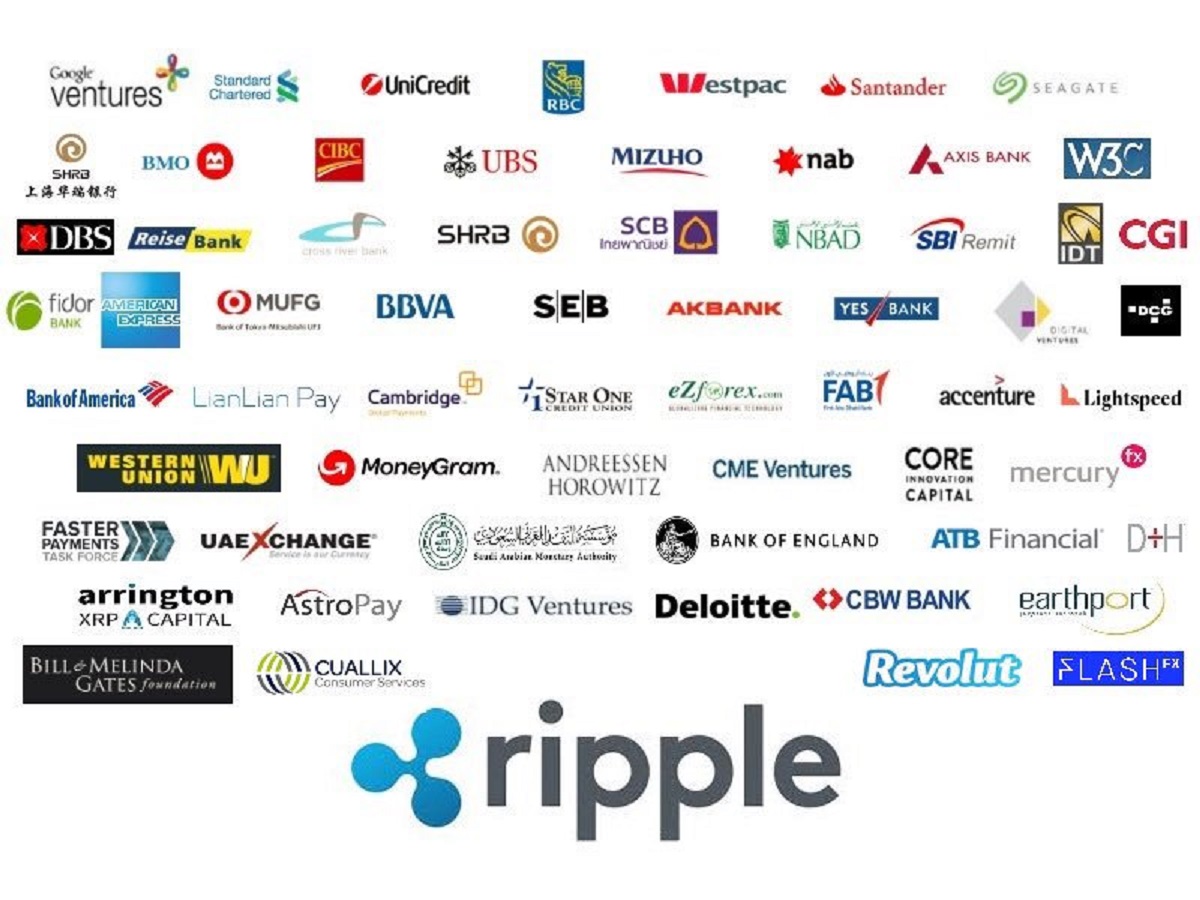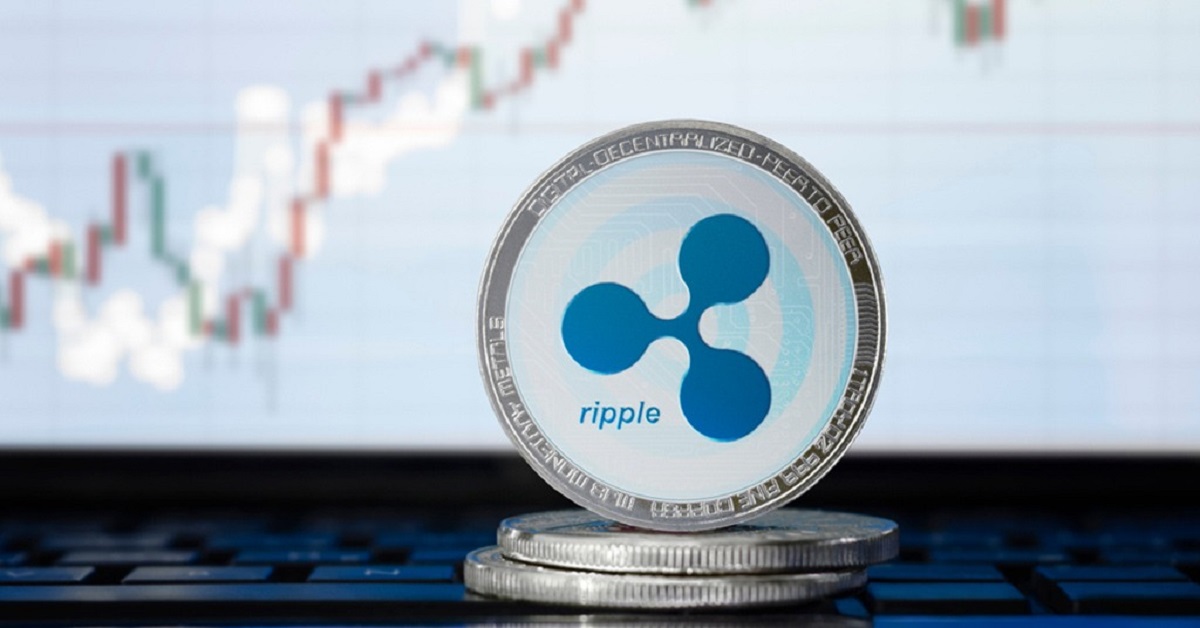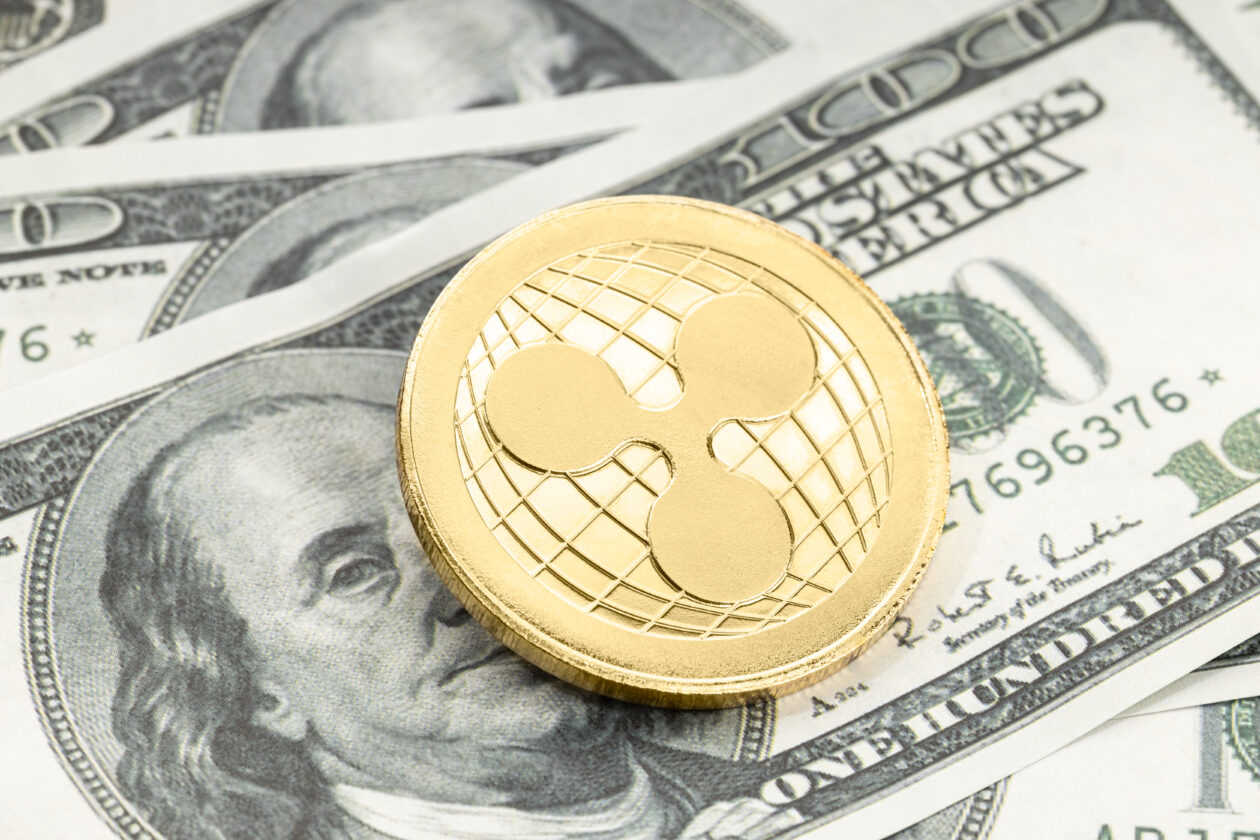Introduction
In today’s rapidly evolving banking industry, traditional financial institutions are increasingly exploring new technologies to improve their operations and provide enhanced services to their customers. One such technology that has gained significant traction is Ripple, a digital payment protocol and cryptocurrency.
Ripple is designed to enable fast, secure, and low-cost international money transfers, addressing the inherent challenges associated with cross-border transactions. With its decentralized network, Ripple offers a viable alternative to the traditional correspondent banking system, which is often slow, expensive, and prone to errors.
The emergence of Ripple has allowed banks to streamline their payment processes and improve efficiency while reducing costs. By leveraging Ripple’s technology, financial institutions can facilitate real-time, transparent, and seamless cross-border transactions, transforming the way money is moved around the globe.
In this article, we will explore the role of Ripple in the banking industry, delve into the benefits it offers to banks, discuss major financial institutions that have adopted Ripple, examine how Ripple revolutionizes cross-border transactions, and address the challenges faced by banks in implementing this technology. We will also reflect on the future developments and partnerships for Ripple in the banking sector.
By the end of this article, you will have a comprehensive understanding of the impact Ripple has had on the banking industry and its potential for transforming the way we make international payments.
The Role of Ripple in the Banking Industry
Ripple has emerged as a game-changer in the banking industry, addressing long-standing challenges associated with cross-border transactions. Traditional correspondent banking systems often involve multiple intermediaries and lengthy settlement periods, resulting in delays, high costs, and a lack of transparency.
Ripple’s technology, built upon its distributed ledger known as the XRP Ledger, offers a decentralized and efficient solution for banks to facilitate international payments. It enables financial institutions to connect directly with one another, eliminating the need for intermediate banks and streamlining the process. This direct connection significantly reduces both the time and cost involved in cross-border transactions.
One of the key features of Ripple’s technology is its consensus algorithm, which ensures the accuracy and integrity of transactions. This algorithm enables banks to settle payments in real time and with high certainty, eliminating the need for reconciliation processes and minimizing the risk of errors and fraud.
Moreover, Ripple’s digital asset, XRP, serves as a bridge currency that can be used to facilitate cross-border transfers between different fiat currencies. By utilizing XRP, banks can avoid the need for pre-funding accounts in various currencies, thus reducing the capital costs associated with liquidity management.
Ripple’s technology also provides enhanced transparency throughout the payment process. With the use of digital contracts called smart contracts, banks can track the progress of transactions in real time, ensuring visibility and accountability. This level of transparency not only improves trust between banks but also enhances the overall efficiency of the banking system.
Furthermore, Ripple’s technology is designed to comply with regulatory guidelines, making it a suitable choice for banks that prioritize regulatory compliance. The platform includes features such as transaction monitoring and anti-money laundering (AML) controls, which help banks meet their compliance obligations and mitigate the risk of fraudulent activities.
In summary, the role of Ripple in the banking industry is to revolutionize cross-border transactions by offering a decentralized, efficient, and transparent solution. By leveraging Ripple’s technology, banks can overcome the challenges associated with traditional correspondent banking systems, creating a more streamlined and cost-effective international payment ecosystem.
Benefits of Using Ripple for Banks
Ripple offers a range of benefits for banks that adopt its technology, providing them with a competitive advantage in the ever-evolving banking industry. Here are some key advantages of using Ripple:
- Faster Transactions: Ripple’s technology enables near-instantaneous settlement of cross-border transactions. Unlike traditional correspondent banking systems that may take multiple days for funds to reach their destination, Ripple allows banks to settle transactions within seconds, improving efficiency and customer satisfaction.
- Lower Costs: Ripple’s decentralized network eliminates the need for intermediaries in cross-border transactions. This significantly reduces processing fees and operational costs associated with traditional banking systems. By utilizing Ripple, banks can provide cost-effective international payment solutions to their customers.
- Increased Liquidity: With Ripple’s digital asset, XRP, banks can access increased liquidity for cross-border transactions. XRP serves as a bridge currency, enabling banks to convert funds efficiently between different fiat currencies without the need for pre-funding accounts in each currency. This reduces the capital requirements for banks and improves liquidity management.
- Enhanced Transparency: Ripple’s technology provides real-time visibility into the progress of transactions, offering enhanced transparency for banks and their customers. The use of smart contracts allows for trackable and auditable transactions, reducing the risk of errors and ensuring accountability throughout the payment process.
- Improved Security: Ripple’s consensus algorithm and cryptographic measures ensure the security and integrity of transactions. By utilizing a distributed ledger, banks can eliminate the need for intermediaries and reduce the risk of fraud and cyberattacks. This enhances the security of cross-border transactions and safeguards sensitive financial information.
- Regulatory Compliance: Ripple’s platform is designed to comply with regulatory guidelines, making it an attractive choice for banks. The technology includes features such as transaction monitoring and AML controls, helping banks meet their compliance obligations and mitigate regulatory risks. This allows banks to embrace innovative solutions while maintaining regulatory compliance.
Ultimately, adopting Ripple’s technology provides banks with a competitive edge in the global banking landscape. The speed, cost-efficiency, liquidity, transparency, security, and regulatory compliance benefits offered by Ripple empower banks to deliver enhanced cross-border payment services to their customers, driving innovation and growth in the banking industry.
Major Banks That Use Ripple
Ripple’s technology has gained considerable traction in the banking industry, with several major financial institutions embracing its benefits and incorporating it into their operations. Here are some of the notable banks that have adopted Ripple:
- Bank of America (BoA): As one of the largest banks in the United States, Bank of America has recognized the potential of Ripple’s technology. BoA has been actively exploring the use of Ripple for cross-border payments, aiming to enhance the speed and efficiency of its international transactions.
- Santander: Santander, a leading international bank headquartered in Spain, was one of the early adopters of Ripple. The bank has implemented Ripple’s technology for its blockchain-based payment solution, known as Santander One Pay FX. This solution allows customers to make international transfers quickly and at a lower cost.
- Standard Chartered: Standard Chartered, a well-established international bank based in the United Kingdom, has collaborated with Ripple to improve its cross-border payment capabilities. The partnership aims to enhance the bank’s real-time payment systems and provide faster and more efficient transactions for its customers.
- PNC Financial Services: PNC, a prominent financial institution in the United States, joined forces with Ripple to explore the potential of blockchain technology in international payments. Through this partnership, PNC aims to leverage Ripple’s technology to enhance its payment processes and improve customer experiences.
- UBS: UBS, a Swiss multinational investment bank, has conducted pilot projects using Ripple’s technology. The bank has focused on testing the efficiency and scalability of Ripple’s platform for cross-border payments. UBS recognizes the potential of blockchain technology and aims to leverage Ripple’s capabilities for its banking operations.
These major banks represent a fraction of the financial institutions that have embraced Ripple’s technology. Many other banks, including Axis Bank, Mizuho Financial Group, and SBI Group, have recognized the benefits of Ripple and have adopted it to transform their cross-border payment processes.
The adoption of Ripple by these major banks demonstrates the growing acceptance and trust in its technology within the banking industry. It highlights the significant impact Ripple has had in revolutionizing cross-border transactions and improving the efficiency of global payment systems.
How Ripple Revolutionizes Cross-Border Transactions
Ripple has revolutionized cross-border transactions by addressing the inherent challenges and inefficiencies associated with traditional payment systems. Here are the key ways in which Ripple’s technology has transformed the cross-border payment landscape:
- Real-Time Settlement: Ripple enables near-instantaneous settlement of cross-border transactions. Unlike traditional systems that often take several days to settle payments, Ripple’s technology allows banks to facilitate transfers within seconds. This speed of settlement enhances transactional efficiency and allows for quicker access to funds.
- Lower Costs: By leveraging Ripple’s network, banks can significantly reduce the costs associated with cross-border transactions. Traditional banking systems involve multiple intermediaries and high fees for currency conversion and correspondent banking. Ripple eliminates the need for intermediaries and enables seamless currency exchange, resulting in lower costs for financial institutions and their customers.
- Liquidity Optimization: With Ripple’s digital asset, XRP, banks can optimize liquidity for cross-border transactions. XRP serves as a bridge currency, eliminating the need to maintain pre-funded accounts in various fiat currencies. By utilizing XRP, banks can efficiently convert one currency into XRP and then into another currency, reducing the capital requirements and costs associated with liquidity management.
- Global Accessibility: Ripple’s technology facilitates global accessibility by connecting banks and financial institutions worldwide. With Ripple’s decentralized network, banks can easily establish direct connections with other Ripple-enabled institutions, expanding their reach and enabling seamless cross-border transactions. This global accessibility eliminates the traditional barriers and limitations of correspondent banking systems, making international payments more efficient and accessible.
- Enhanced Transparency: Ripple’s technology offers enhanced transparency throughout the payment process. Through the use of the XRP Ledger and smart contracts, banks and customers can track the progress of transactions in real time. This transparency not only improves trust between parties but also reduces errors and enables more efficient reconciliation processes.
- Improved Security: Ripple’s distributed ledger technology provides enhanced security for cross-border transactions. By eliminating the intermediaries involved in traditional correspondent banking systems, Ripple reduces the risk of fraudulent activities and cyberattacks. The use of cryptography and decentralized consensus in Ripple’s network ensures the integrity and security of transactions, safeguarding sensitive financial information.
Ripple’s ability to revolutionize cross-border transactions lies in its efficient, cost-effective, and secure approach. The technology addresses long-standing challenges in the banking industry, making global payments faster, cheaper, and more accessible for financial institutions and individuals alike.
Ripple’s Impact on Remittances and Payments
Ripple has had a significant impact on the remittance and payment industry, revolutionizing the way money is sent across borders. Here are some key ways in which Ripple has transformed remittances and payments:
- Speed and Efficiency: Ripple’s technology enables faster and more efficient cross-border remittances and payments. Traditional remittance services often involve multiple intermediaries, resulting in lengthy processing times. With Ripple, transactions can be settled within seconds, reducing the time it takes for funds to reach their recipients. This speed and efficiency allow individuals and businesses to access their funds quickly and conveniently.
- Lower Costs: The high fees associated with remittances have long been a barrier for individuals sending money abroad. Ripple addresses this issue by eliminating the need for intermediaries and streamlining the payment process. This reduction in intermediaries significantly lowers transaction costs, ensuring that more of the sent amount reaches the intended recipients.
- Financial Inclusion: Ripple’s technology promotes financial inclusion by enhancing access to affordable cross-border payments. Traditional banking systems often exclude individuals without access to formal banking services. With Ripple, anyone with internet access can send and receive funds, leveling the playing field and bringing financial services to underserved populations.
- Transparency: Ripple’s blockchain-based technology provides enhanced transparency for remittances and payments. The use of distributed ledger technology allows individuals and businesses to track the progress of their transactions in real time. This transparency builds trust and helps prevent fraud, ensuring that funds are sent and received securely.
- Improving Remittance Corridors: Ripple has been instrumental in improving remittance corridors where traditional systems have limitations. By establishing direct connections between banks, Ripple allows for seamless transfers between different fiat currencies. This eliminates the need for multiple correspondent banks and reduces the costs and time associated with remittances in specific corridors.
- Enabling New Payment Solutions: Ripple’s technology has paved the way for innovative payment solutions in various industries. For example, Ripple has partnered with companies in the digital media sector to enable micro-payments and monetize content seamlessly. This opens up new revenue streams and business models that were previously not feasible.
Overall, Ripple’s impact on remittances and payments has been transformative. The technology’s speed, cost-efficiency, accessibility, transparency, and ability to drive financial inclusion have disrupted traditional remittance services and paved the way for a new era of cross-border transactions.
Challenges Faced by Banks in Implementing Ripple
While Ripple offers numerous benefits for banks, its implementation is not without challenges. Here are some of the key challenges faced by banks in adopting Ripple:
- Regulatory Compliance: Banks operate in a highly regulated environment, and implementing new technologies like Ripple requires careful consideration of regulatory requirements. Ensuring compliance with anti-money laundering (AML) and know-your-customer (KYC) regulations is crucial. Banks need to navigate the regulatory landscape and work closely with regulators to ensure a smooth integration of Ripple’s technology.
- Legacy Systems Integration: Banks often have complex legacy systems that may not be easily compatible with Ripple’s technology. Integrating Ripple’s systems with existing infrastructure can be a challenge, requiring significant investments and adjustments to ensure seamless integration and interoperability.
- Network Participation: The success of Ripple’s technology relies on widespread network participation. Banks need to collaborate and establish connections with other financial institutions that are also using Ripple. Building the necessary network of Ripple-enabled banks and encouraging participation from other institutions can be time-consuming and challenging.
- Market Liquidity: Ripple’s digital asset, XRP, relies on market liquidity for efficient cross-border transactions. Banks need to ensure that there is sufficient liquidity in the market for the currencies they handle. Managing liquidity and navigating the XRP market can pose challenges, particularly during periods of high volatility.
- Security and Risk Management: As with any new technology, security and risk management are critical considerations. Banks need to implement robust security measures to protect against potential vulnerabilities and cyber threats. The distributed ledger technology used by Ripple requires additional considerations to safeguard sensitive financial information and prevent unauthorized access.
- Operational Scalability: Implementing Ripple’s technology at a large scale can pose operational challenges for banks. The technology needs to handle high transaction volumes efficiently, ensuring that the system can scale seamlessly to meet increasing demand. Proper capacity planning and infrastructure adjustments are necessary to ensure smooth operations.
Despite these challenges, banks continue to explore the potential of Ripple and work towards overcoming these obstacles. Collaboration between banks, regulatory bodies, and Ripple’s development team is essential in addressing these challenges and fostering the widespread adoption of Ripple’s technology in the banking industry.
Future Developments and Partnerships for Ripple in the Banking Sector
Ripple’s technology has demonstrated its potential to transform the banking industry, and there are several exciting future developments and partnerships in store. Here are some key areas of focus for Ripple in the banking sector:
- Expansion of RippleNet: Ripple aims to expand its global network, RippleNet, by partnering with more financial institutions around the world. By increasing the number of banks that participate in the network, the reach and impact of Ripple’s technology will continue to grow, allowing for seamless cross-border transactions across various corridors.
- Central Bank Digital Currencies (CBDCs): Ripple is actively exploring opportunities to collaborate with central banks in the development of Central Bank Digital Currencies (CBDCs). By leveraging Ripple’s technology, central banks can improve the efficiency and security of their payment systems, potentially revolutionizing the way digital currencies are issued, transferred, and exchanged.
- Enhanced Payment Services: Ripple is continuously working to enhance its payment services for banks. This includes refining its settlement solutions, offering new features and functionalities, and improving the scalability and performance of its technology. These advancements will further streamline cross-border transactions and provide an even better user experience for banks and their customers.
- Integration with DeFi: Ripple recognizes the potential of decentralized finance (DeFi) and aims to integrate its technology with the growing DeFi ecosystem. This would enable banks to tap into the benefits of DeFi, such as decentralized lending, borrowing, and asset management, while ensuring compliance and leveraging the efficiency of Ripple’s network.
- Partnerships with Fintech Startups: Ripple continues to forge partnerships with fintech startups that offer innovative solutions in the banking sector. By collaborating with these startups, Ripple can further enhance its technology and explore new use cases for its blockchain-based solutions.
- Exploring Internet of Value: Ripple envisions a future where value can be seamlessly transferred over the Internet, creating an “Internet of Value.” The company continues to research and develop technologies that can enable this vision, including interoperability between different blockchain networks, further expanding the capabilities of its technology.
These future developments and partnerships highlight Ripple’s commitment to fostering innovation and transforming the banking sector. By collaborating with banks, central banks, fintech startups, and embracing emerging technologies, Ripple aims to position itself at the forefront of the digital revolution in the financial industry.
Conclusion
Ripple has emerged as a leading technology in the banking industry, providing a solution to the challenges of cross-border transactions. Through its decentralized network and digital asset XRP, Ripple offers banks the ability to facilitate fast, secure, and cost-effective international payments.
The impact of Ripple on the banking industry cannot be overstated. It has revolutionized cross-border transactions by enabling real-time settlement, lowering costs, optimizing liquidity, enhancing transparency, improving security, and promoting regulatory compliance.
Major banks around the world, including Bank of America, Santander, Standard Chartered, PNC Financial Services, and UBS, have recognized the benefits of Ripple and have integrated its technology into their operations. These banks have experienced firsthand the advantages of faster transactions, reduced costs, and improved efficiency.
Ripple’s technology has also had a profound impact on remittances and payments, providing individuals and businesses with faster, cheaper, and more accessible cross-border payment solutions. It has brought financial inclusion to underserved populations and driven innovation in various industries.
While there are challenges in implementing Ripple, such as regulatory compliance, legacy system integration, network participation, and security considerations, banks continue to work towards overcoming these obstacles. Collaboration between banks, regulators, and Ripple’s development team is critical to address these challenges and foster the widespread adoption of Ripple’s technology.
Looking ahead, Ripple’s future developments and partnerships in the banking sector hold great promise. Expanding RippleNet, collaborating with central banks on CBDCs, enhancing payment services, integrating with DeFi, partnering with fintech startups, and exploring the Internet of Value all demonstrate Ripple’s commitment to innovation and transforming the financial industry.
In conclusion, the role of Ripple in the banking industry is transformative. Its technology has the potential to reshape the way we conduct cross-border transactions and provide financial services globally. As more banks and financial institutions embrace Ripple, we can anticipate further advancements that will benefit not only the banking sector but also individuals and businesses around the world.

























